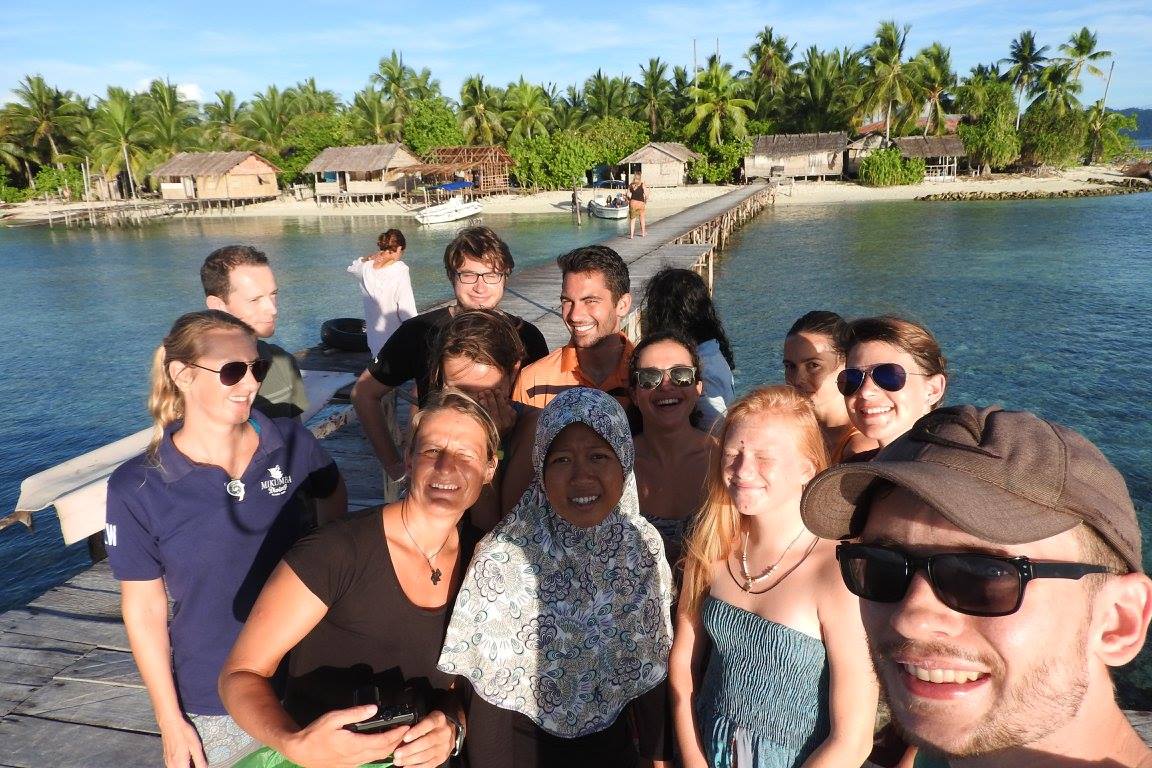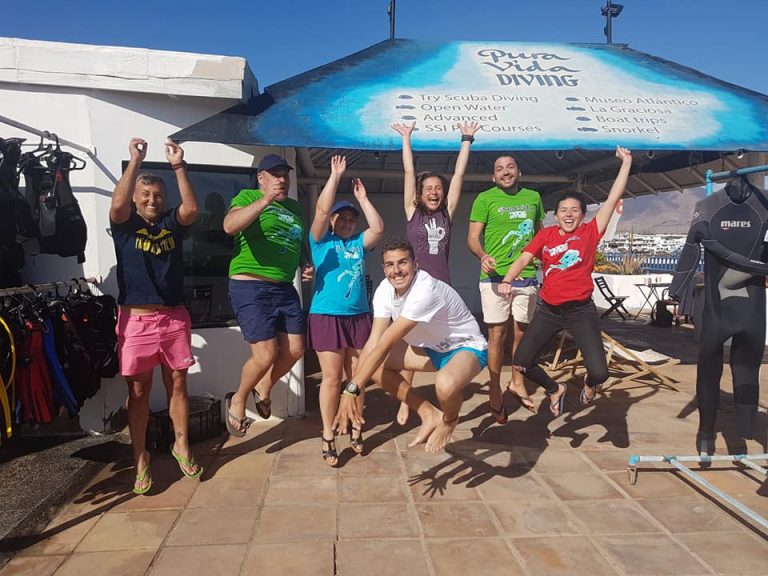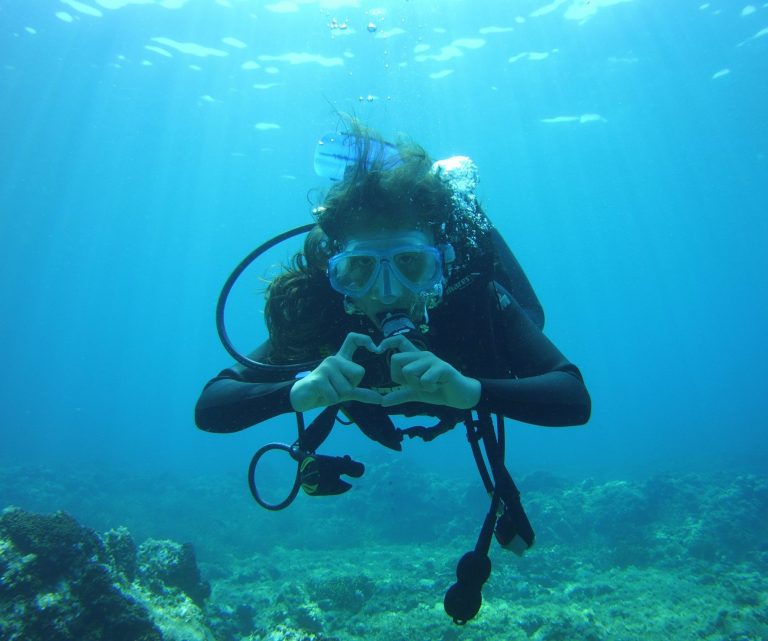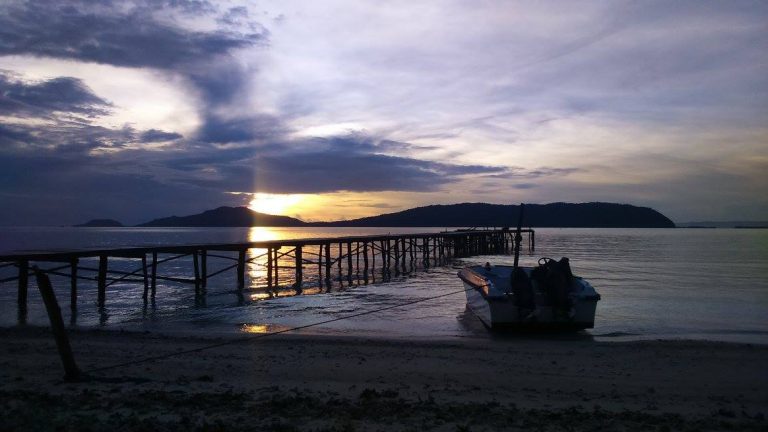February 2017
” When you walk with naked feet, how can you forget the earth ”
Trip Planning
My Raja Ampat experience started long before I arrived at Arborek Island – long before I even booked the project. I worked in a dive centre in Greece and for all the time I had been there we have had only one Indonesian client, but his stories and passion about West Papua and the Raja Ampat area were contagious. He was telling me all these stories about these insanely beautiful dives with 7-8 meter oceanic mantas, turtles greeting you every time you go in the water (note: I love turtles so this was a very big selling point!) and also this incredible biodiversity still pristine and untouched as Raja Ampat is still far off the dive travel maps (not for long unfortunately). I still keep a map of all the areas our Indonesian friend recommended for diving – who knew that less than a year later I will be diving them?
I also work in the field of organising events, which is a particularly stressful field – if you don’t believe me have a look at the Forbes most stressful jobs for 2017! There was a point in which I just wanted to escape from everything and find time for myself and … of course go diving! I have been thinking about volunteer experience for a year by this point but it never occurred to me that I can maximize the opportunity by volunteering in a project with diving. I started researching and there were 4 destinations I considered – Indonesia, Fiji, Thailand and Philippines. I did my homework and spoke with the various volunteer organisations for the locations – I also thought hard about what I wanted to get out of the experience.
Criteria for the trip
To improve my diving and learn more about diving in various diving conditions (currents specifically). Diving twice a day was a must!
- To improve (actually develop!) my fish identification knowledge and get to understand the oceans and the eco system better
- Following on from the two above I also wanted to actually understand how marine conservation works, what are the steps we need to take to be able to save our oceans and also how I can create divers who are conscious about conservation and protection
- To dive in a place where very few people have visited and is still not “a hot destination” – that way I could have my own experience which no one else had!!!
- To live remotely – somewhere where there is no internet connection – they call it escapism and burn out from work, I call it opportunity to reconnect with nature and build relationships with live human beings!
- To live in a close community – I always believed I would love to live on a remote beach with very few people around me, but until I experienced it how could I be sure that this is the life for me?
- To actually be able to afford it without having to starve for 6 months
And by this point I thought – there is no way such project exists!
Great Projects & the Barefoot Conservation Project
Luckily, I found the Great Projects and it turned out there was such project! I have to admit I was a bit sceptical at the beginning because I could not believe that the Raja Ampat Barefoot Conservation Project was exactly what I wanted! The expectations I had created in my head about the project were so high by this point that I was worried to not get disappointed. Not only did I not get disappointed, but my experience at Barefoot camp far exceeded my expectations.
If I did not get you excited until now I will start with why I loved the experience so much – the order is a bit chaotic as I would want to put everything at the top!

The Scuba Diving in Raja Ampat
I never thoughts I can see 10 mantas on one dive, followed by eagle ray, black tip reef shark, turtles, oh wait did I forget that very loud Bumphead Parrotfish and all the million scads and jack fish.. a and the blue ringed octopus and..
I couldn’t just say I loved the diving, because there was so much more to diving than I imagined! Every day was different, every day we saw the most amazing creatures, we learned to identify them and we even had our very own Barramundi Cod called Britney living under the Barefoot jetty.
Okay, lets try to put diving into perspective of activities:
Pointy dives (part of science)
In other words the leader points at a fish, then everyone “hunts” to see it for about couple of minutes and then we point at the name of the fish written on a dive slate. I had to lead a couple of pointy dives and I can’t tell you how much fun it is to try to not look crazy as you point at the empty water column which only a second ago had a massive coral grouper. Or alternatively try to point out this single Pyramid Butterfly fish which you have not seen until now and it is surrounded by another 20 Butterfly fish of all sorts and no one can understand what you are pointing at. Ah and be very careful if you go on a pointy in current, hydroids can be quite tricky as you are trying to maintain buoyancy, see the fish hidden in between the tight space of rocks and not hit the other 4 people on the head or take their regulator out as they are trying to do the exactly same thing ha ha! Eventually on day 2 or 3 you learn how to cope with all these tasks and also correctly identify the fish!
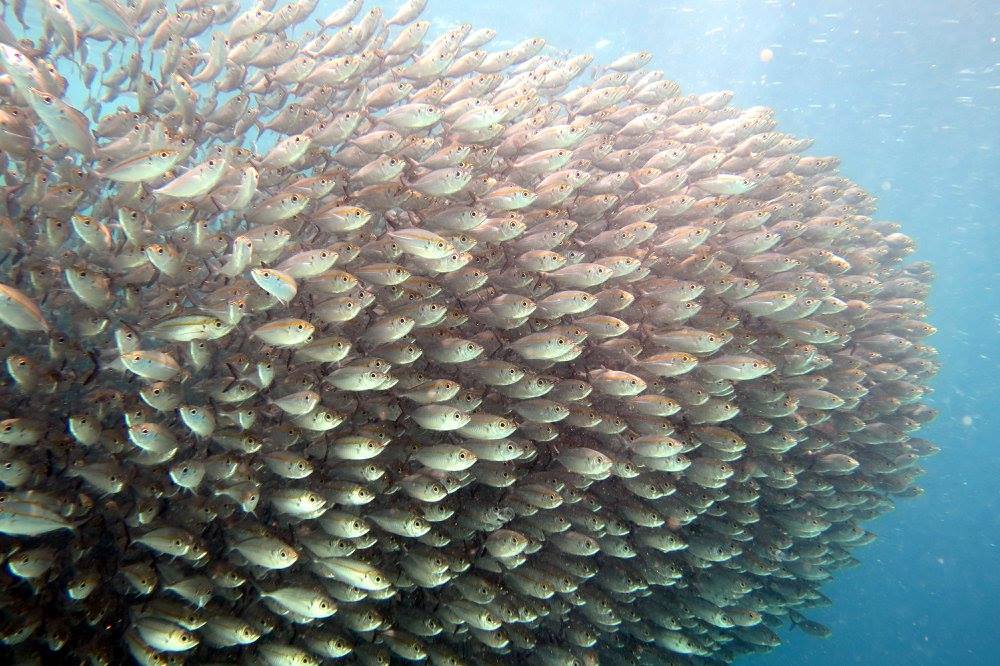

Transect dives (part of science) – also called “count the fish”
We did a science research on 5 different pre-selected locations – and all data collected was neatly input in the Barefoot science database. The aim is to monitor changes in the ecosystem and use this data in order to reduce any negative impact and allow to the ecosystem to restore itself. It was really interesting learning more about how all underwater creatures interact and see it myself. Plus the moment in which you are “aha ! I know who you are!” to a fish is pretty amusing.
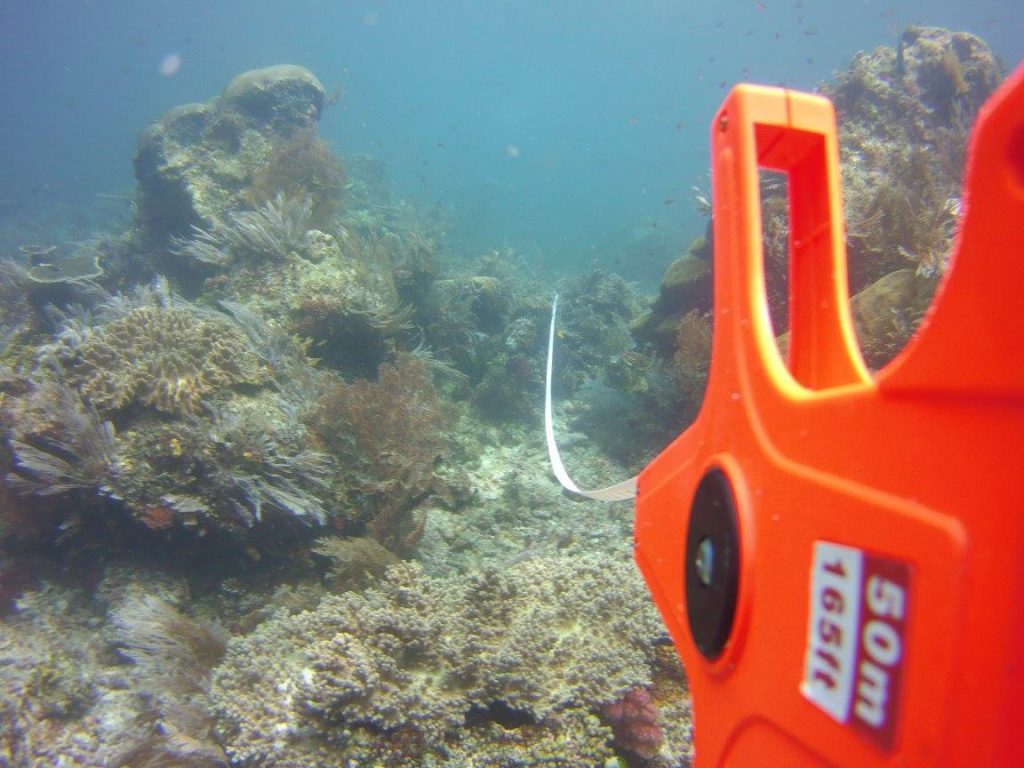
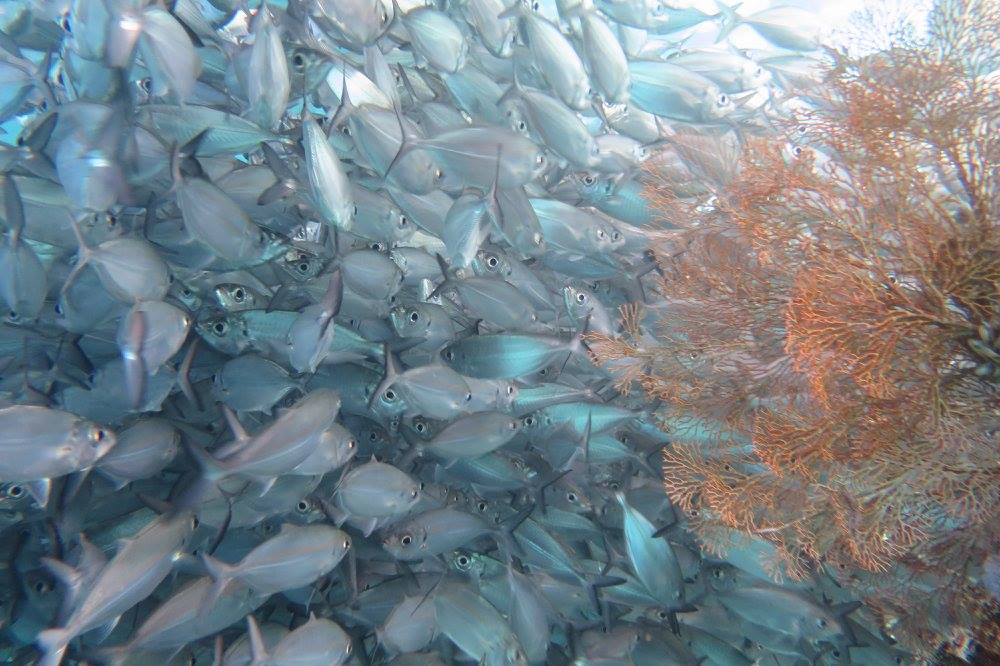

(Eucrossorhinus dasypogon)
Manta dives – also called “make sure you get that manta belly shot!”
I cannot describe the feeling when you see your first ever manta.. nor can I describe the feeling of every time you see a manta after! Mantas are these gorgeous mesmerizing creatures which make you feel hypnotised and although on every dive briefing you hear: “don’t touch the mantas, chase the mantas or ride the mantas” you still kinda want to run a palm on their belly just out of curiosity.
Barefoot have a Manta Scientist who was working on the Barefoot Mantas database which gets shared with Manta Trust for the purposes of tracing the individual mantas, understanding their patterns of movement and behaviours and also making sure to protect individual mantas.
Our aim on manta dives is not only to enjoy the dive with these amazing creatures but also take the so-called belly shots for identification. The spots on the belly of the manta are the way to define the individuals – and then each individual gets a name if he/she is not already on the database. How exciting it was when I named my first manta!
As we were going to the cleaning stations for the mantas – Manta Sandy and RSB as the dive spots are called – we always needed to make sure to be respectful of the mantas and not “invade”. One tip – mantas are where current is so make sure you get a reef hook!
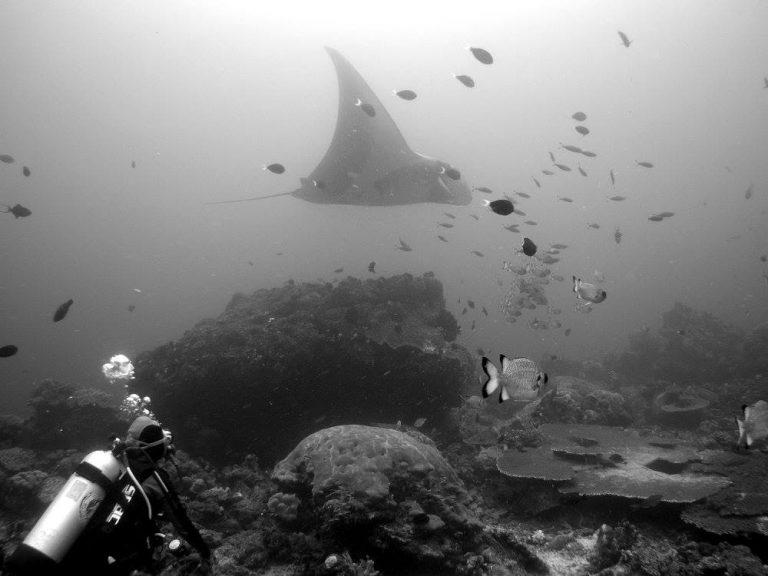
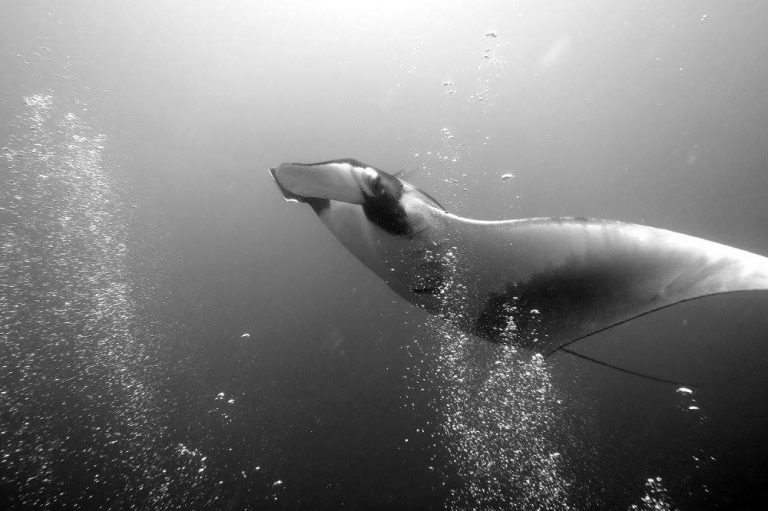
Fun Dives – Every Saturday
Fun dives are once a week on Saturday and are great way to finish the diving week. They are also a topic which will be welcomed with a lot of laughter from some of the volunteers who I was with. The reason is that we experienced almost every possible weather condition in existence during these dives – from cancelled dive due to massive thunderstorm to glorious superhot sunshine and in some ways, it was always quite entertaining due to the shared experience.
On fun dives days we were going to dive spots which are about hour to hour and a half away which meant conditions could change a few times by the time we arrive.
My favourite dives were Melissa’s Garden (everyone who went there nominated the spot number 1 – the coral and fish diversity is insane and as you are going around a little island the view of the water breaking above you makes it really mysterious – op and there is a black tip in front of you!), Mike’s Point (totally for you if you love topography) and Blue Magic (indescribable with words you simply have to experience of trying to keep up with the barracudas to the left, the turtle to the right, the two oceanic mantas in front of you, the black tip below you and the white tip just slightly to the side).

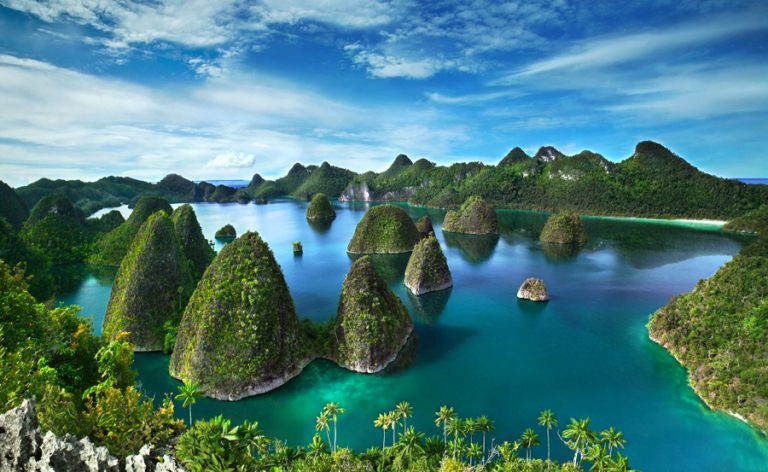
Night Dives
Night dives were also once a week – normally on Monday or Tuesday which makes 3 dives on these days so make sure you eat well and don’t skip that additional glass of water!
Diving from the jetties (both Barefoot and Arborek) at night proved to be as exciting as daytime but with variety of creatures we did not see in daytime. My favourite were the walking sharks – so totally worth it seeing them “run” as it makes you giggle underwater. It is full of decorative crabs, little lionfish and if you look carefully you will also see that cute cuttlefish who is pretending to be a coral. Make sure you take your torch as there are no torches in Barefoot and you don’t want to sit out the night dive because you don’t have a torch.

Summary: a day in camp
6:30 wake up on the jetty after a beautiful night under the stars & see the bunch of other enthusiasts still sleeping on bean bags / mattresses around you
The view when you wake up:
or
4:30 wake up on the jetty with the sound of the glorious thunderstorm coming, grab your bean bag / mattress and try to run down the jetty without falling / pushing anyone off the jetty. Then get in bed (hopefully without Ginger, a funny looking ginger cat which loved to stay on the top bunk beds, waiting for you there) and again wake up in time for breakfast
7:00 Breakfast – you better like fried bananas – they are a classic!
At this point there are two options for your day:
8:00 Science lectures / dive training lectures – which means you will have two dives that day and some rest / study time
or
9:00 School (school is only in the morning) – which means you will have one dive before lunch and one dive after lunch or 2 dives straight after lunch
12:00 Lunch – rice, anyone?
13:00-18:00 Diving and science
19:00 Dinner – time to spice it up with a bit of Sambal
20:00 Jetty & Bintang time – can you count all the stars?
Sundays were slightly different as 1. it was our day off from diving and 2. volunteers had to cook. The latter was a lot of fun especially for people who do not enjoy or even don’t know how to cook. Here I refer to myself! I remember the horror when we were told that we can’t skip it so we need to join one of the four teams- breakfast, lunch, cake or dinner. As a future owner of a cupcake shop (or at least in hopes of being) I got inspired to join the cake team (although I had not made a cake in the last 10 years) and it was great! The following week I willingly volunteered for cake team again and the cake was a huge success! Since I am back now I bake almost every week!
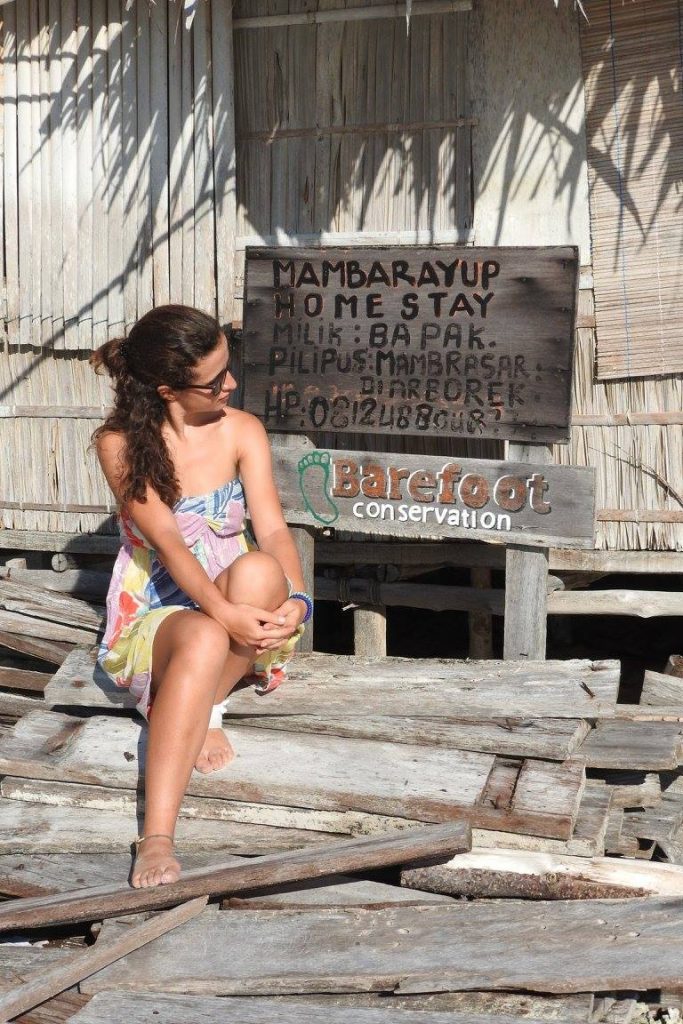
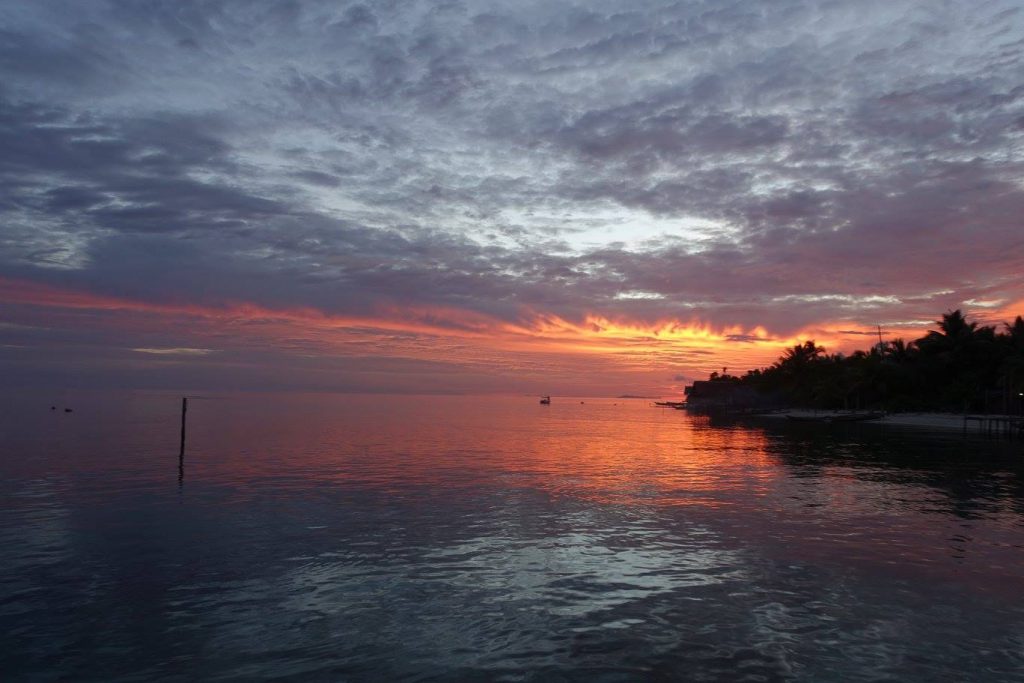

Highlights of the trip & overall experience
The time in Barefoot provided me with a lot of new insights and knowledge, variety of emotions and thoughts and it also gave me the right frame of mind to reconcile how amazing our world is. Not to mention that it introduced me to amazing underwater world, stunning people, some of who became good friends, and unforgettable experiences.
